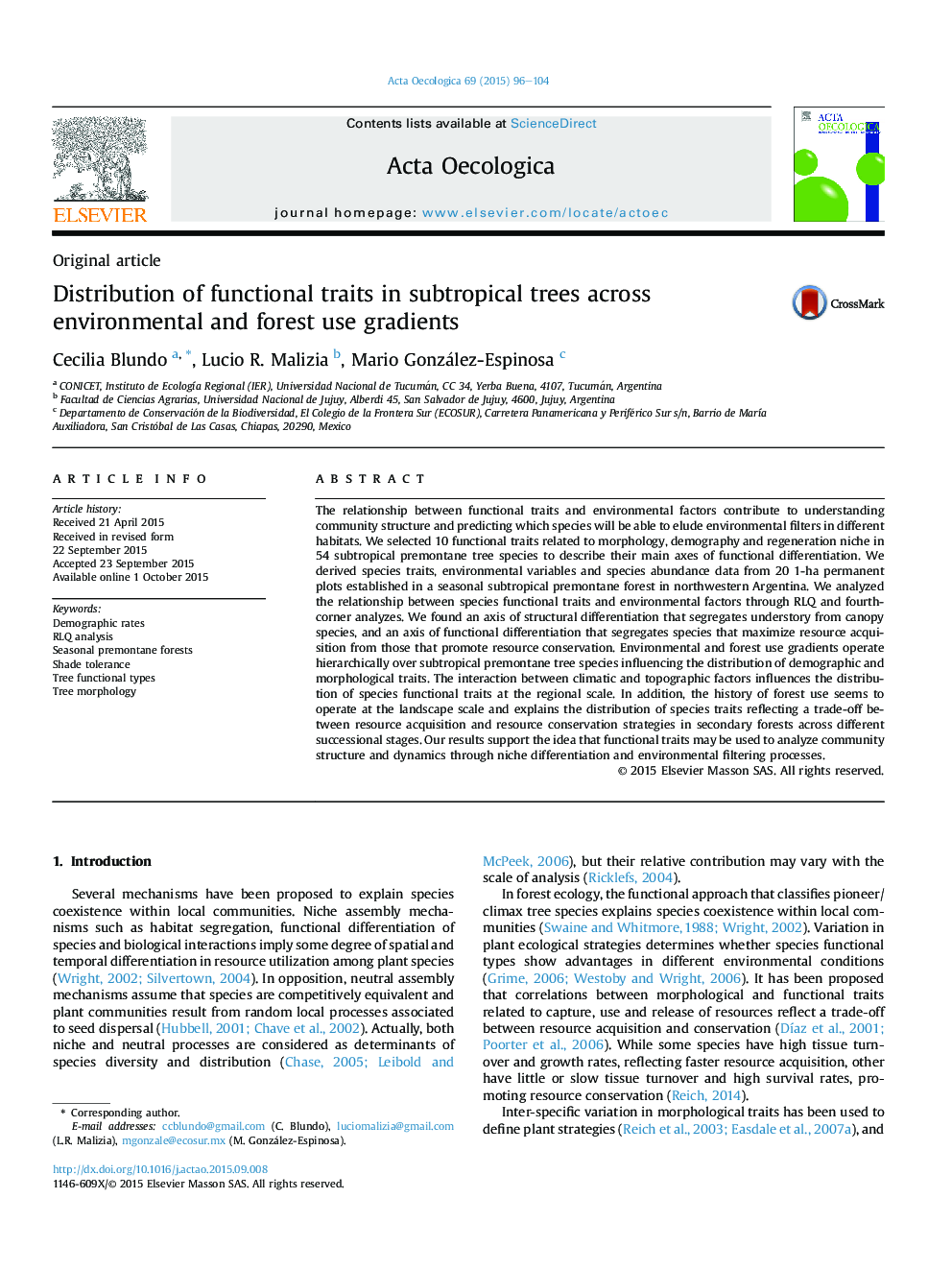| Article ID | Journal | Published Year | Pages | File Type |
|---|---|---|---|---|
| 4380645 | Acta Oecologica | 2015 | 9 Pages |
•Environment and forest use operate hierarchically over functional traits distribution.•Climate and topography influence traits distribution at broad scale.•Forest use reflects a trade-off between resource acquisition/conservation strategies.•The traits-environment approach helps to understand effects of climatic change.•Also effects of selective logging on composition and productivity of secondary forests.
The relationship between functional traits and environmental factors contribute to understanding community structure and predicting which species will be able to elude environmental filters in different habitats. We selected 10 functional traits related to morphology, demography and regeneration niche in 54 subtropical premontane tree species to describe their main axes of functional differentiation. We derived species traits, environmental variables and species abundance data from 20 1-ha permanent plots established in a seasonal subtropical premontane forest in northwestern Argentina. We analyzed the relationship between species functional traits and environmental factors through RLQ and fourth-corner analyzes. We found an axis of structural differentiation that segregates understory from canopy species, and an axis of functional differentiation that segregates species that maximize resource acquisition from those that promote resource conservation. Environmental and forest use gradients operate hierarchically over subtropical premontane tree species influencing the distribution of demographic and morphological traits. The interaction between climatic and topographic factors influences the distribution of species functional traits at the regional scale. In addition, the history of forest use seems to operate at the landscape scale and explains the distribution of species traits reflecting a trade-off between resource acquisition and resource conservation strategies in secondary forests across different successional stages. Our results support the idea that functional traits may be used to analyze community structure and dynamics through niche differentiation and environmental filtering processes.
